When to use the flat cut vs the point cut for corned beef
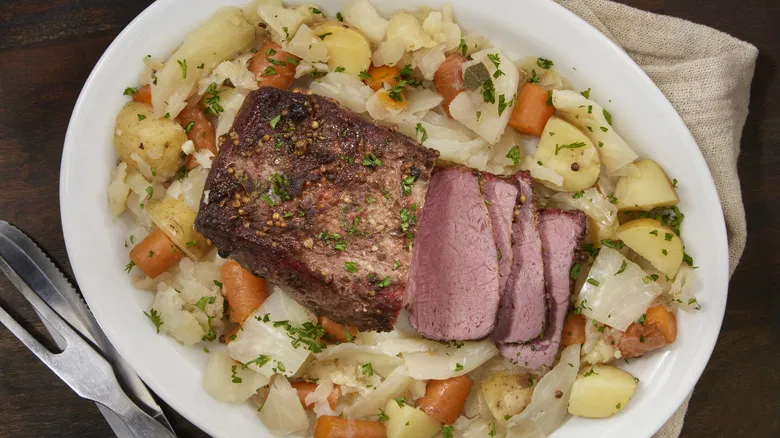
The flat cut features a consistent, rectangular shape and is located near the cow's rib cage. It's ideal for dishes that require uniform slices, such as corned beef sandwiches or breakfast hash. If you're preparing corned beef and cabbage, the point cut, also referred to as the deckle, is the better choice. This cut comes from an area closer to the shoulder, where the meat is both juicy and tender. The best cooking method for the point is low and slow in a pot or slow cooker, allowing the fat to render into the meat. This rich, flavorful quality makes the point cut perfect for corned beef.
If you're interested in home-curing corned beef, you can try other cuts, like a beef round cut from the cow's hindquarters. Again, consider the fat content when determining the best cooking method. Regardless of the cut you choose, in addition to the brine, you'll want to incorporate spices such as mustard seeds, coriander seeds, cloves, and possibly some sugar. Sodium nitrate is commonly added during the curing process for commercially prepared corned beef to preserve the meat and impart its distinctive pink hue. However, some chefs and home cooks opt for beet juice to achieve the same color. If you want to enjoy corned beef anytime, there's always the option of canned corned beef, which works wonderfully in a corned beef hash.
Recommended
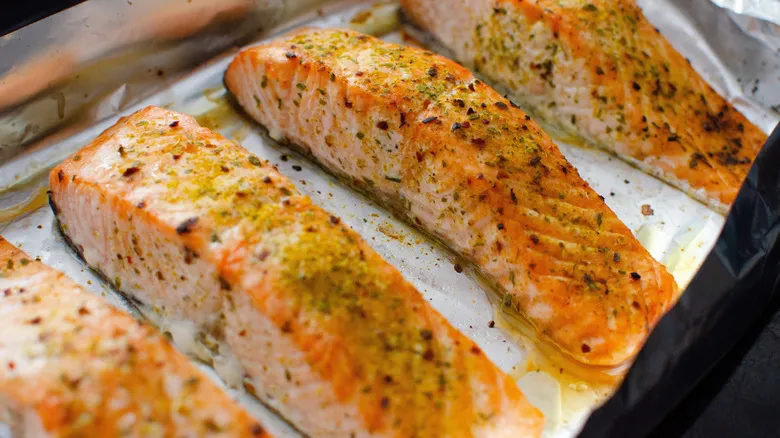
The Best Way To Season Salmon For The Oven
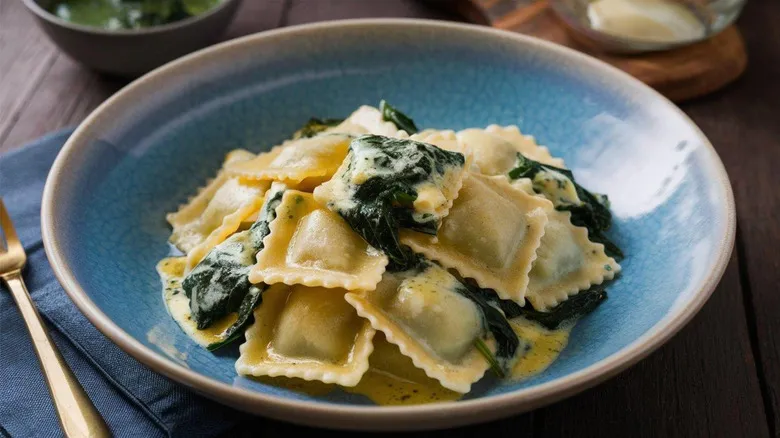
Stop Wasting A Whole Ravioli To Test Its Doneness
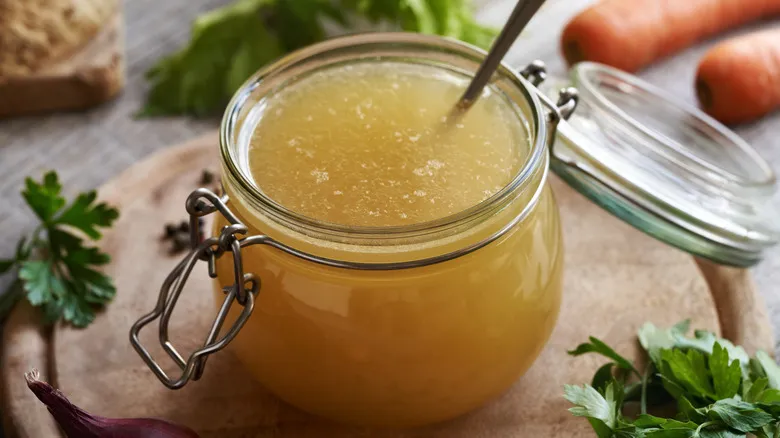
What's The Best Way To Freeze Chicken Broth?
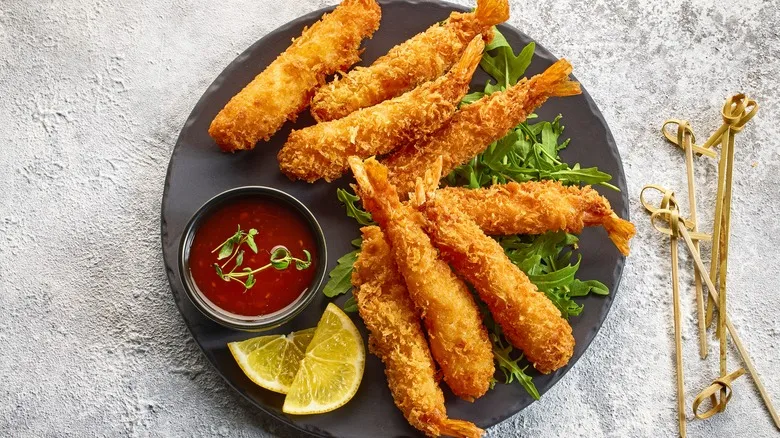
For Breaded Shrimp That Doesn't Fall Apart, Reach For Your Air Fryer
Next up

